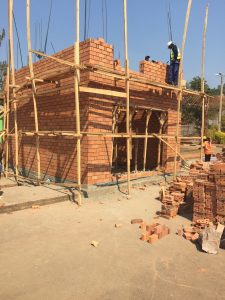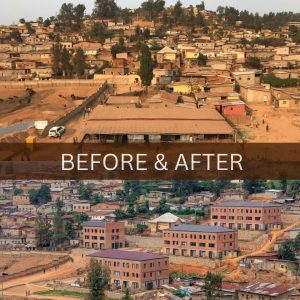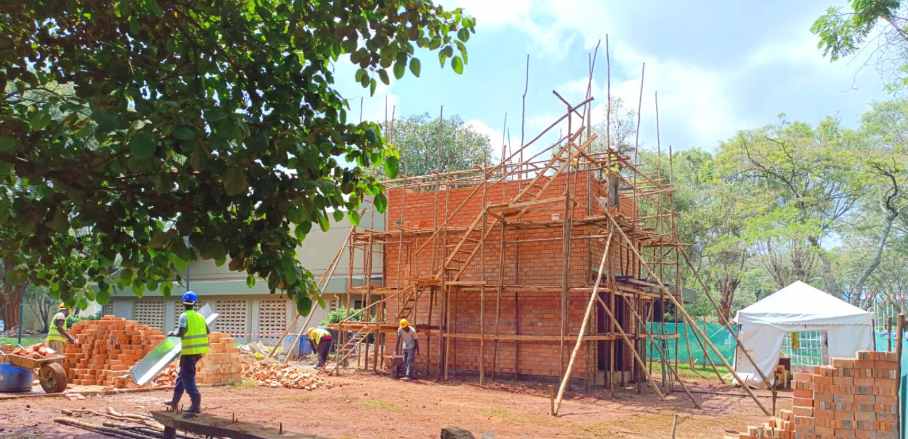The Construction Industry in Rwanda: Opportunities or Challenges for Urban Growth?
Rwanda’s urban population is rapidly increasing, posing chances and challenges. Enrico Morriello illustrates how the country’s construction industry could pave the way to sustainable urbanisation.
By 2050, Rwanda’s population will increase to 22-25 million inhabitants, which leads to a population density of approximately 1.000 people per square kilometre. As a consequence, the country will consolidate its position as the most densely populated country in Africa as well as one of the densest worldwide. Based on an urbanisation ratio projected at 60-70 per cent, most of the population will be residing in urban areas.
Rwanda could harness the full potential of the benefits of urbanisation: improved connectivity to basic services and quality of life, economic growth, a boom in the construction sector, new markets, and better health and education. However, the pace at which this happens and how it is managed may hinder the achievement of such potential or even magnify its negative impacts.
Balancing Opportunity and Challenge in Urban Development
The construction sector plays a key role in laying the foundations for achieving real sustainability within the urbanisation process and in limiting or amplifying such impacts. In addition to the well-known potential impacts of construction material production on the environment, negative effects of urbanisation may involve uncontrolled population distribution (often in unhealthy, risk-prone informal settlements), competition for housing (including amenities such as electricity, and water), and employment. In this evolving context, the proper management of the construction sector value chain represents both an opportunity and a great challenge for Rwanda’s urban growth.
As a landlocked country, Rwanda faces relatively high construction costs, driven by a predominance of imported material in the formal sector, while relying on the use of sub-standard, temporary material for the informal housing stock.
“Made in Rwanda”: Promoting Institutional Change to Foster Sustainability
In the past, the institutional reluctance to accept the use of an improved version of the vernacular construction material (compressed soil blocks) in favour of more modern, often imported solutions and the rigidity of planning and construction standards have driven the urbanisation process mainly in two directions.
At first, the exacerbation of construction costs within the formal residential and non-residential sectors drastically limited the access to decent housing for a majority of the existing and new urban population. Secondly, there has been an almost uncontrolled sprawl of substandard residential units located in risk-prone areas at the fringe of major economic nodes and characterised by precarious living conditions in informal settlements.
However, within the last decade, the “Made in Rwanda” approach has emerged for several value chains, with the construction value chain being a key focus. Since 2010, several initiatives have attempted to bring innovation to the sector through standards and technologies, aiming to reduce its environmental impact, increase affordability and generate employment and income-generating activities.
Exploring Green Solutions in Construction
In 2013, the Swiss Development and Cooperation Agency (SDC) implemented the PROECCO programme with the technical support of Skat Consulting to promote and support the construction value chain by driving the transition towards the production and use of locally-made, greener, clay bricks. The advantage of an already accepted (yet improved) construction material along with efficient housing design allowed the construction of more affordable units, while substantially reducing the environmental footprint and creating new off-farm employment.

The Swiss Cube under construction © PROECCO
While more technologies and value chains – such as stone, bamboo, un-fired clay brick, and improved stabilised earth blocks, among others – are being explored, the material costs contribute only partly to the final housing costs. Achieving real affordability implies a fully integrated approach combining the technological aspects – materials, design, and quality control – with inclusive planning processes, innovative financing mechanisms and a tight collaboration between the private and the public sector.
Integration and Inclusion are Key in Revolutionising the Construction Sector
Attempts to engage the private sector in the supply of affordable housing, combined with still limited use of participatory approaches and the reluctance from the financial sector in engaging in potentially riskier and less remunerative operations, have often led to mixed or unsatisfactory results. The supply is still mostly oriented toward high-income earners while neglecting the lowest income groups. As a result, low-income earners are displaced to areas far from income-generating opportunities which also disrupts the social fabric.
Hence, achieving healthy urbanisation in Rwanda requires stronger efforts beyond the materials value chain itself. A first attempt in this direction is currently being implemented by PROECCO with the city of Kigali. The pilot intervention in “Mpazi” is trying to demonstrate that an integrated approach leads to a positive urban transformation, focusing on social inclusion, environmental protection, and financial sustainability by leveraging land values and engaging the residents.
A Community-Driven Process to Achieve Inclusive Urban Transformation

The Mpazi Project – before & after © PROECCO
The project aims to show that efficiently transforming land currently occupied by informal areas with the participation of the local community leads to a sustainable financing system through partnerships between private and public organisations. The government plays a crucial role by funding infrastructure and coordinating community engagement. Instead of resorting to expropriation, current residents are offered the opportunity to exchange their current property for space in newly built residential and mixed-use buildings.
In the future, Rwanda can draw on a lot of untapped potential deriving from a sustainable urbanisation process. Using this potential relies on more sophisticated participatory processes and innovative financial models as well as mutually beneficial public-private partnerships. More complex and integrated programmes require coordination by skilled professionals in both the private and public sectors along with the active engagement of local communities. Thus, the strengthening and empowerment of Rwandan human capital is essential in managing and implementing these processes – making it one of the best possible investments that the country can make to achieve sustainable and equitable growth in its urban areas.
